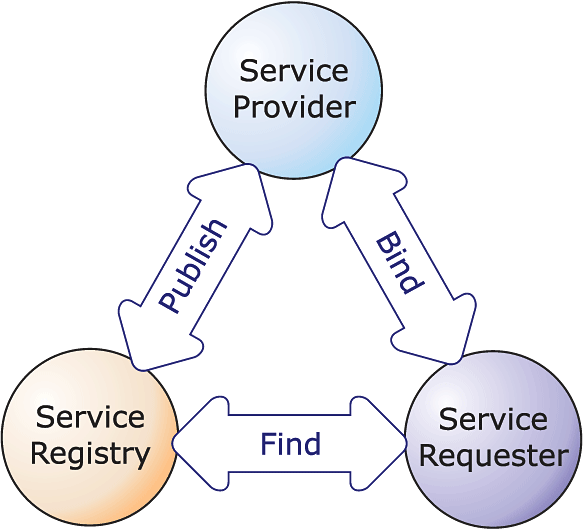|
Service role
|
Description
|
|
Service Provider
|
The Service Provider publishes a service description to a Service Registry. From a business perspective, the Service Provider is the owner of the service. From an architectural perspective, it is the platform that hosts access to the service.
|
|
Service Registry
|
The service registry provides a searchable set of services, enabling users to find businesses worldwide that offer the exact products and services that are required.
|
|
Service Requester
|
From a business perspective, a service requester is the consumer of a service. From an architectural perspective, it is an application that searches for a service description that matches its request via the Service Registry, and then invokes or initiates an interaction with the service. When the request and matching description bind, the application connects to a Web service at a particular Web location and starts interacting with it.
|
